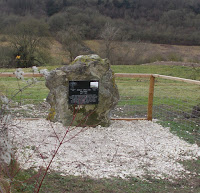He then moved on to some very interesting meta-issues: so, the word "first" can often be a tough one to define: First to make a film? First to screen it? First to screen it publicly? First to make apparatus that could be re-used and generalised? First with a process? And so it is little wonder that there are several, often equally valid, claims to being "first". But he also noted that step changes in engineering and science often emerge because the time was ripe: moving pictures, television, control of fission - there is a long list that had numerous parties pursuing the goal contemporaneously, so it's no surprise if more than one crosses the finishing line pretty much at the same time. Sometimes these teams are competing, sometimes they are ignorant of each other.
So no surprises that powered flight also had a number of keen folk after the prize. There's not much argument that the Wright Brothers were indeed first with their short flight in December 1903, although the fact that it was so short made some question its use. But there were indeed a number of competing claims - the time for powered flight had come.
And presumably no surprises that there were a lot of others of whom we probably haven't heard who tried and missed the cut completely, which brings me to my point. On a Sylvester excursion with the In-laws, we are guided to the Percy Pilcher memorial:
Pilcher
1867-1899
The British aviation pioneer who
conducted extensive trials with full
sized hang gliders of his own design
and construction from 1896-99
He made successful towed flights
in his hawk glider from this site
during 1896-97.
Percy was just one of those who was having a go, but didn't come close enough to be remembered in many history books. His story is fully told elsewhere so I won't retell it here. There's a rather good BBC documentary on him that you can view.
There's a psychogeographic twist to it: the memorial had been in the middle of a golf course (like most things in Kent) which closed recently so that certain reptiles could make more money. This necessitated the moving of the memorial (which is still, however, on the hill from which Pilcher flew) - hence the very new looking railings and barbed wire. This means that in going to view the memorial, you can see what a golf course looks like when it is neglected for 12, 24, 36 months. How thin the veneer of civilisation.
BBC production

No comments:
Post a Comment